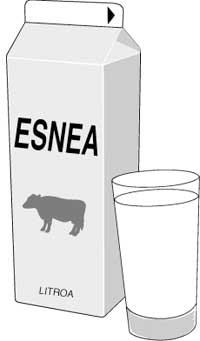Yogurt: Live Food
Yogurt is the most digestive product derived from milk; by the thermophilated lactic bacteria Lactobacilus bulgaricus and Streptococus thermophilus, found inside, yogurt is a fermented, acidified and curdled milk at its base. Consequently, it is as nutritious as milk, despite having a little more protein between 4 and 5 g/100 g (because milk powder is added); fats depend on the type of original milk and the most obvious difference is found in carbohydrates.

Milk lactose, by the action of bacteria, is transformed into lactic acid, a transformation that allows people with difficulties digesting lactose in the intestine to easily digest yogurt. Milk and yogurt contain the same amount of vitamins and minerals, but in some cases, as in the case of calcium, what is found in yogurt is better used than what is in milk.
Yogurt, compared to other foods, provides a beneficial living matter for our intestines that cause the formation of vitamins of type K and B in the intestine, essential for the balance of the nervous system of the person.
The two that Dr. Tissier found at the Institut Pasteur in Paris in 1900 are some of the desserts we can find today in the market. The bacteria found in both are bifidus, usually present in the large intestine of the human being and are not lactic bacteria that offer conventional yogurts. Consequently, lactose is intact, maintaining a greater similarity with milk.
If we compare them with yogurts, both have less acidity, are softer, sweeter and more sticky. These two dairy products are assimilable to milk and both have a short life and should be kept in the refrigerator. Beware of dairy products that do not need cold, since in their composition contain several additives and have nothing to do with the products mentioned here.
Brief

“Milk is not a food that only children and young people should eat, but it is working without interrupting the bones of any age, eliminating a proportion of calcium and replacing virgin calcium.
For a correct substitution of calcium milk is essential, without parallel food, although some claim otherwise.
However, we want to clarify that calcium needs in all stages of life are not the same. Care especially for the proper consumption of milk and dairy products of young people, athletes and seniors.
Taking into account the scientific basis, the professionals who try to promote a healthy diet agree on this topic, as was evident in the days on milk and health held in Barcelona.”





